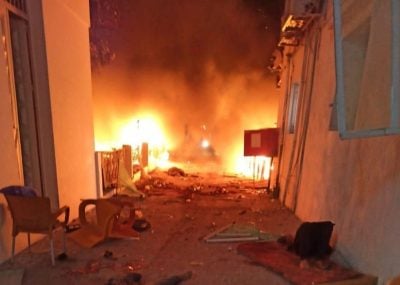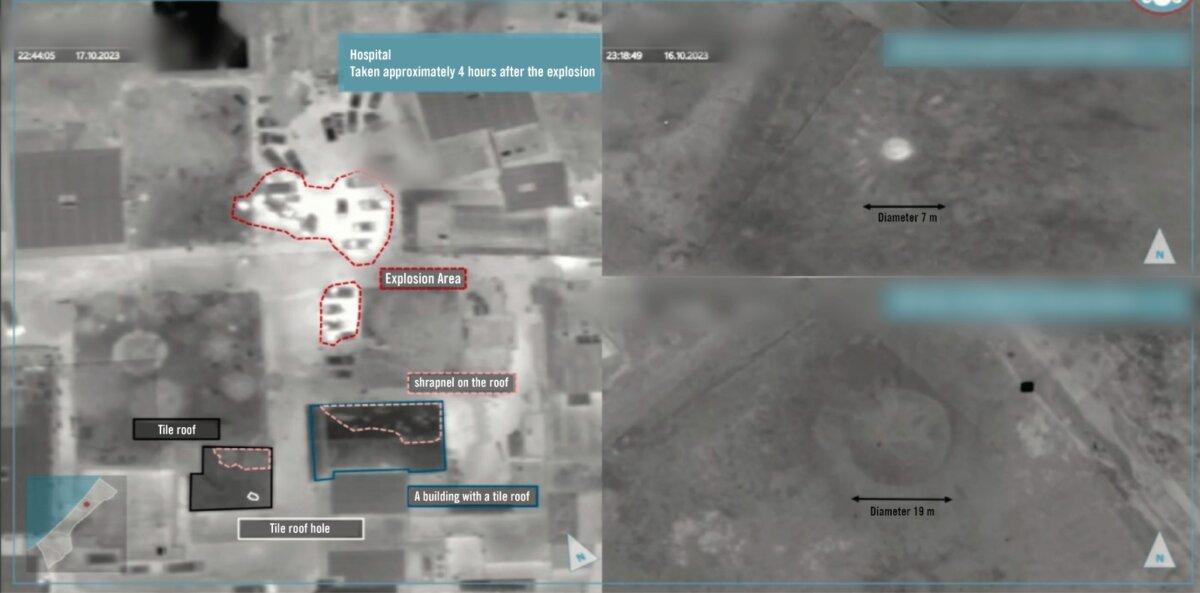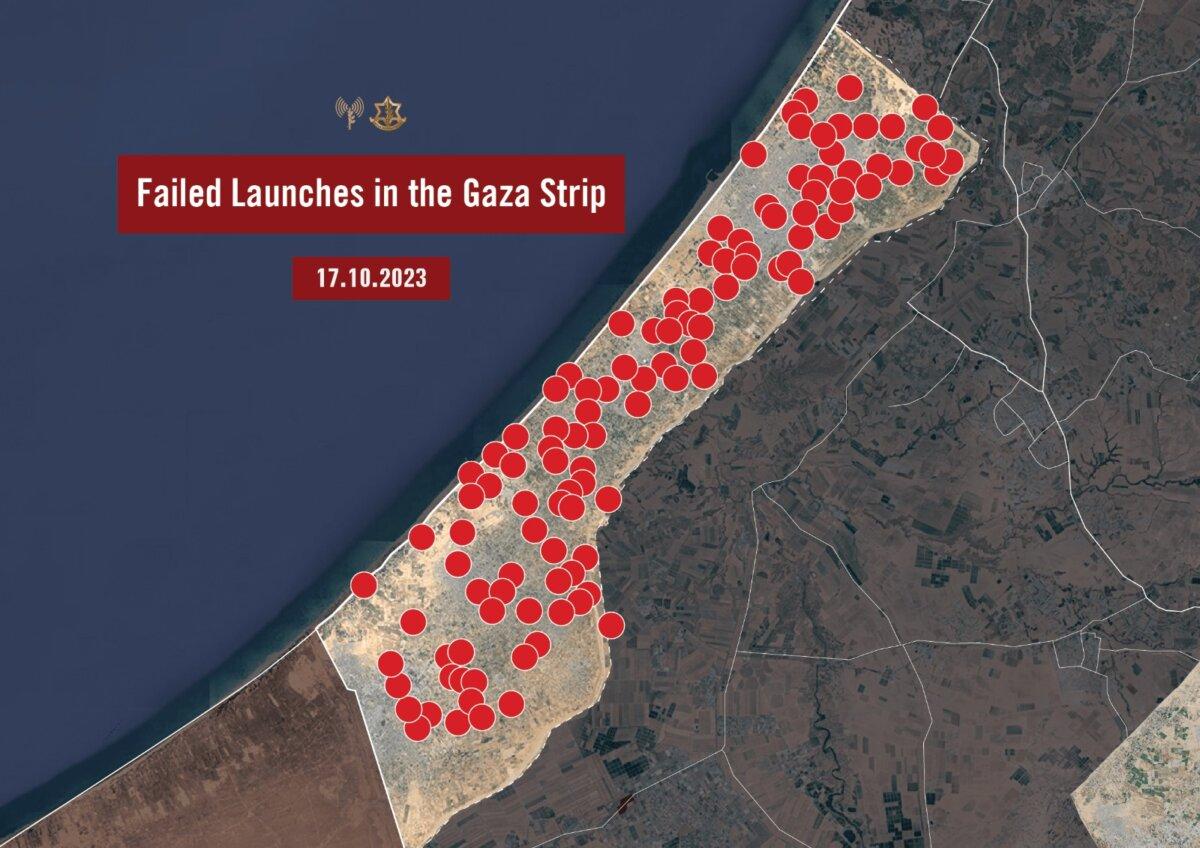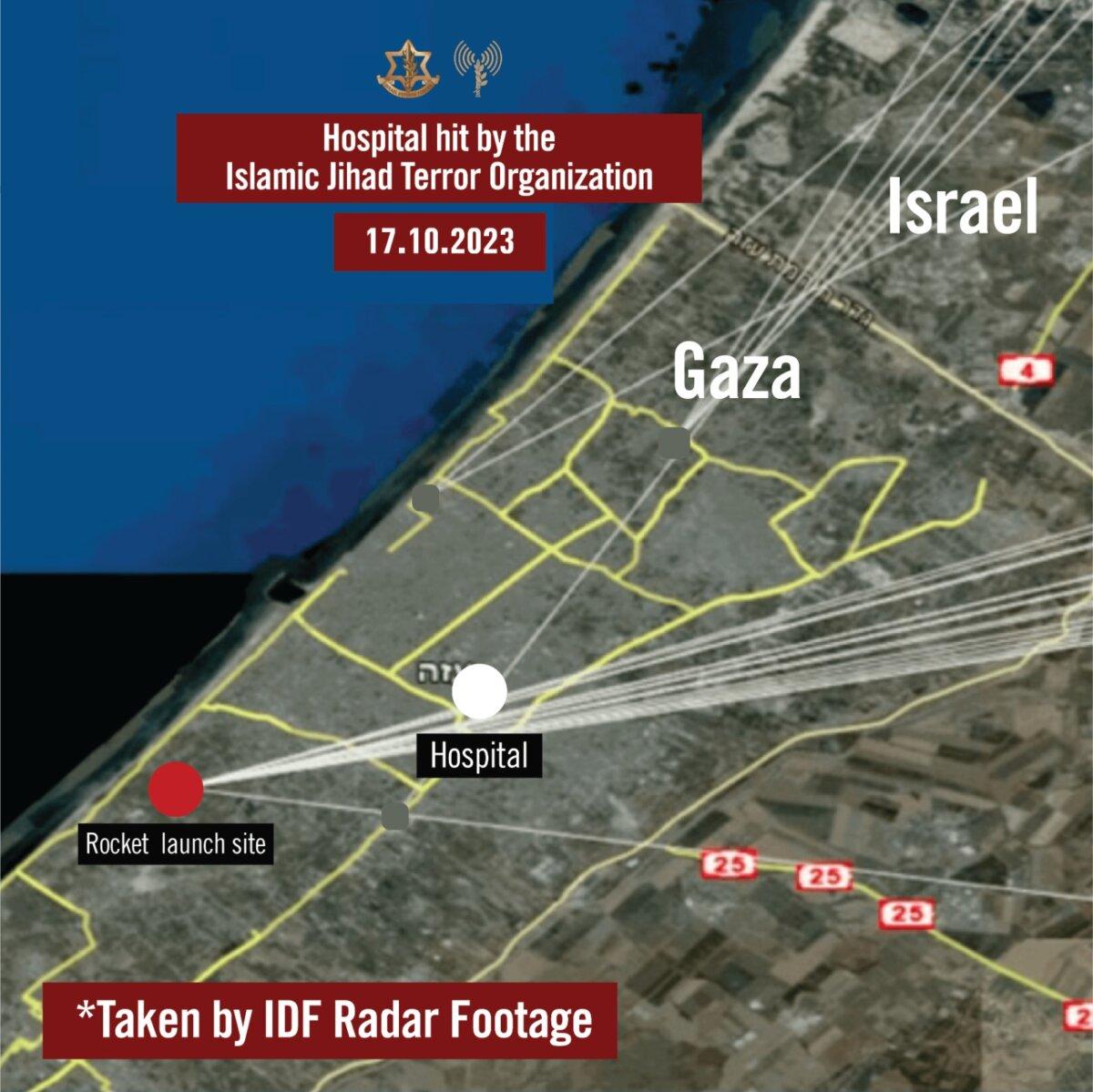What’s Known About the Gaza Hospital Blast as Hamas Claims Unravel

All Global Research articles can be read in 51 languages by activating the Translate Website button below the author’s name.
To receive Global Research’s Daily Newsletter (selected articles), click here.
Click the share button above to email/forward this article to your friends and colleagues. Follow us on Instagram and Twitter and subscribe to our Telegram Channel. Feel free to repost and share widely Global Research articles.
***
As the deadly Gaza hospital blast has surged into the headlines, the Israeli military and the Hamas terror group have traded accusations, but mounting evidence points to a misfired rocket by the terrorist organization Islamic Jihad—and that the story is being spun into a false anti-Israel narrative.
Here’s what’s known so far.
From Blast to Blame
At around 7 p.m. local time on Oct. 17, an explosion rocked the al-Ahli hospital in Gaza City.
The hospital is located in the central Gaza Strip, where Israel has been carrying out what it says are precision strikes targeting the Hamas terror group after Hamas operatives raided Israeli communities on Oct. 7, killing hundreds of civilians.
Gruesome scenes from the hospital blast were broadcast widely, with video footage emerging showing a large fireball at or near the building, and photographs of the hospital grounds strewn with bodies of the dead, including children.
Hamas blamed Israeli air strike for the blast and the “horrific massacre,” while Palestinian officials have said the explosion killed as many as 500 people.
The Israeli military said the incident was caused by a rocket fired by terrorists, aimed at Israel, that failed in mid-flight and crashed into the hospital grounds. Israeli officials said that the relatively large explosion at the hospital grounds was caused by a combination of warhead and unspent fuel in the projectile.
Since the initial denials by Israeli forces, numerous pieces of evidence have emerged, including images of the blast site consistent with the types of projectiles fired by Hamas and other terror groups, along with intercepted communications purportedly between Hamas operatives discussing the incident, that lend credence to the Israeli version of events.
A number of news outlets quickly picked up the narrative pushed by Hamas, which was that Israeli air strikes had caused the blast—and the human carnage.
Some lawmakers on Capitol Hill piled on as well, with Rep. Rashida Tlaib (D-Mich.), a member of the left-wing “Squad,” posting on X that Israel “just bombed” the hospital, “killing 500 Palestinians (doctors, children, patients) just like that.”
Israel just bombed the Baptist Hospital killing 500 Palestinians (doctors, children, patients) just like that. @POTUS this is what happens when you refuse to facilitate a ceasefire & help de-escalate.
Your war and destruction only approach has opened my eyes and many… https://t.co/mZYoifT7bj
— Rashida Tlaib (@RashidaTlaib) October 17, 2023
However, a number of independent experts—along with U.S. intelligence—have cast serious doubt on the Palestinian claim that Israel was responsible.
What exactly happened is about more than being able to point the finger at a guilty party, as it has implications for regional stability.
Following the blast, protesters hurled stones at Palestinian security forces in the West Bank and at riot police in neighboring Jordan, venting their fury.
Elsewhere in Lebanon, demonstrators tried to remove barbed wire that blocked access to the U.S. embassy in Beirut.
A summit planned in Jordan between President Joe Biden, Jordan’s King Abdullah II, Egyptian President Abdel Fattah el-Sissi, and Palestinian President Mahmoud Abbas was canceled after Mr. Abbas withdrew in protest at the hospital blast.
“This war, which has entered a dangerous phase, will plunge the region into an unspeakable disaster,” warned King Abdullah.
So what did actually happen?
Claims and Counter-Claims
Footage and images reviewed by The Epoch Times from in and around the hospital showed around two dozen burned-out vehicles on the grounds.
Buildings with blown-out windows surrounded the parking lot, some video showed, along with a relatively small crater several feet in diameter on the ground.
much better image showing crater and possible scatter direction of impact debris from direction of impact. https://t.co/ZGikNHKv99
This is a stitched together image of frames from above video to give rough wider angle view and buildings referenced for location match of angle.. pic.twitter.com/TIOmnTGMQX— Nathan J Hunt (@ISNJH) October 18, 2023
Surrounding the apparent blast site were marks of incendiary damage to trees and buildings, which were standing erect rather than reduced to rubble, which some suggest would have been the case if the blast had been caused by a high-caliber Israeli impact weapon.
The large size of the fireball and subsequent fire at the hospital have been used as an argument by those seeking to pin the blame on Israel.
However, he said that the evidence looks like the blast was caused by a failed rocket section hitting the parking lot, with car fuel and projectile propellant causing the massive fireball and subsequent fire.
Crater Size in Focus
A key piece of evidence is the size of the crater.
The Israeli military has said that the absence of a large crater or significant blast damage to nearby buildings adds to proof that the explosion wasn’t caused by one of its ordnances.
“The only location damaged is outside the hospital in the parking lot where we can see signs of burning, no cratering and no structural damage to nearby buildings,” Rear Admiral Daniel Hagari, a spokesperson for the Israeli Defense Forces (IDF) said in a statement on Oct. 18.
Mr. Hagari argued that any aerial munition would have caused far more damage—and of a different nature.
“We would have seen craters and structural damage to buildings, both of which haven’t been identified in this incident,” he said.
He provided examples of what air-to-ground munition craters look like—and they’re significantly bigger than what was seen in the al-Ahli hospital parking lot.

Imagery of the al-Ahli hospital blast site (L) and examples of air-to-ground munition craters (R), provided by the Israeli military. (IDF)
Mr. Hagari said that multiple sources—intelligence, operational systems, and aerial footage—showed that the blast was caused by a misfired rocket launched by a terror group sympathetic to Hamas called Islamic Jihad, which fired the projectile from a nearby cemetery. [Both Hamas and the Islamic Jihad are controlled by Israeli Intelligence, M.C, Global Research]
He said that, at 6:59 p.m. local time, a barrage of around 10 rockets was fired by Islamic Jihad operatives and, moments later, there were reports of an explosion at the hospital.
Further, Mr. Hagari said that the Israeli military had intercepted communications between Hamas operatives that show they were aware that a misfired Islamic Jihad rocket caused the hospital blast—but that they decided to push a fake narrative that it was an Israeli missile.
“According to our intelligence, Hamas checked the reports, understood it was an Islamic Jihad rocket that had misfired—and decided to launch a global media campaign to hide what really happened,” he said. “They went as far as inflating the number of casualties.”
Intercepted Hamas Communications
A recording of a conversation purportedly between several Hamas operatives, released by the Israeli military, confirms Mr. Hagari’s account, namely that it was an Islamic Jihad rocket that had been misfired from near the hospital.
“They are saying that the shrapnel from the missile is local shrapnel and not like Israeli shrapnel,” one of the men says in the recording.
“What are you saying?” the other asks.
After a brief pause, the first man says:
“They shot it from the cemetery behind the hospital.”
While The Epoch Times has been unable to verify the authenticity of the recording, it is another piece of evidence suggesting that Israel is not behind the blast but a failed rocket launch by terrorist forces.
Mr. Hagari also said that, since the start of the Israel–Hamas war, around 450 rockets that have been launched by terrorist organizations aimed at Israel ended up falling in the area of the Gaza Strip.

Image provided by the Israeli military showing failed rocket launches targeting Israel that instead landed in Gaza. (IDF)

Image provided by the Israeli military showing the trajectory of multiple rockets targeting Israel, with the al-Ahli hospital in the direct line of fire. (IDF)
Further, raw footage shared by IDF shows what it says was a rocket aimed at Israel that “misfired and exploded at 18:59—the same moment a hospital was hit in Gaza.”
The footage shows a rocket streaking across the sky before exploding in the air and debris falling, followed by an explosion on the ground—and then an inferno.
RAW FOOTAGE: A rocket aimed at Israel misfired and exploded at 18:59—the same moment a hospital was hit in Gaza. pic.twitter.com/Kf5xJazSap
— Israel Defense Forces (@IDF) October 17, 2023
Elsewhere, White House National Security Council spokeswoman Adrienne Watson said that the United States continues to collect information on the incident—but that initial intelligence assessments absolve the Israeli military of responsibility for the blast.
“Our current assessment, based on analysis of overhead imagery, intercepts and open source information, is that Israel is not responsible for the explosion at the hospital in Gaza,” she said in a statement on X.
While Ms. Watson did not indicate a possible guilty party, President Joe Biden lifted the lid a bit higher on the U.S. assessment, telling Israeli Prime Minister Benjamin Netanyahu during a visit to Israel on Oct. 18 that “it appears as though it was done by the other team, not you.”
As more information has come to light about the blast, Mr. Netanyahu took to X to say that
“barbarian terrorists in Gaza are the ones who attacked the hospital in Gaza, not the IDF.”
“Those who brutally murdered our children also murder their own children,” he added.
The entire world should know: It was barbaric terrorists in Gaza that attacked the hospital in Gaza, and not the IDF.
Those who brutally murdered our children also murder their own children.
— Benjamin Netanyahu – בנימין נתניהו (@netanyahu) October 17, 2023
Around 1,400 Israelis were killed when Hamas terrorists broke through a security barrier on Oct. 7 and infiltrated communities, killing civilians in cold blood, including children.
*
Note to readers: Please click the share button above. Follow us on Instagram and Twitter and subscribe to our Telegram Channel. Feel free to repost and share widely Global Research articles.
Tom Ozimek is a senior reporter for The Epoch Times. He has a broad background in journalism, deposit insurance, marketing and communications, and adult education.
Featured image is from Al Mayadeen English

